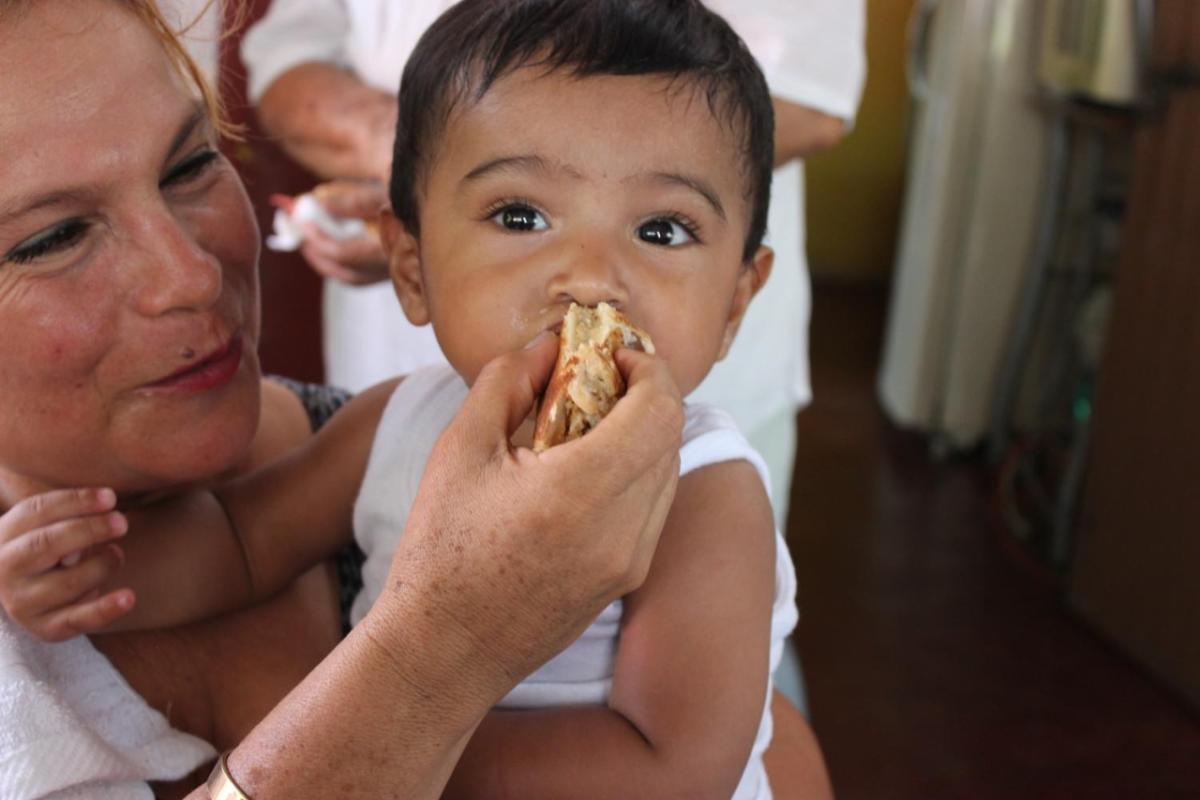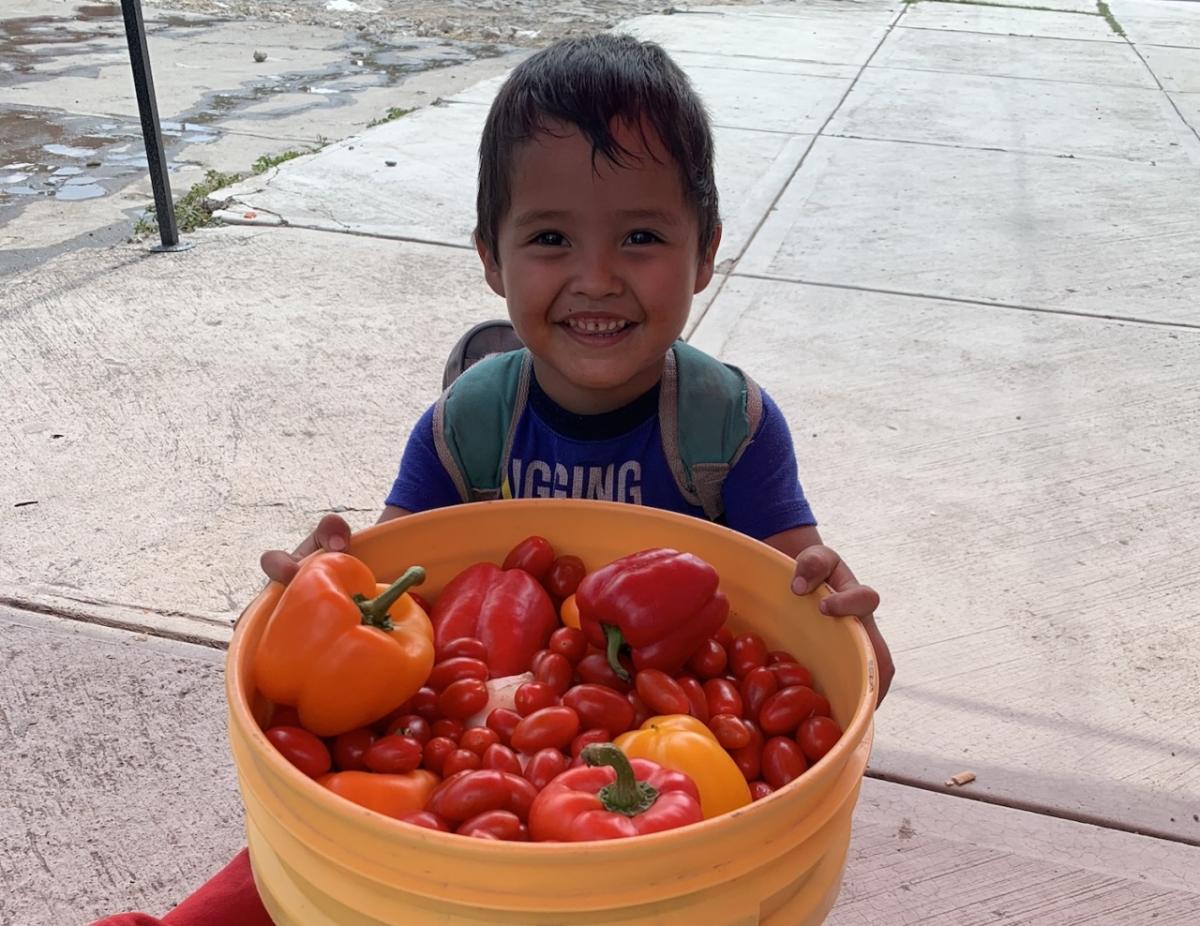How the Power of Partnerships Can Tackle Food Insecurity
Words by 3p Editors
Originally published by TriplePundit
Approximately 800 million people around the world go hungry each day. According to the U.N. Food and Agriculture Organization (FAO), about 1 in 3 people worldwide are at risk of food insecurity, a figure that jumped significantly due in large part to the global pandemic.
Mexico, a model of how innovation can address food insecurity
Mexico is one such country in which many of its people confront food insecurity. Despite a lucrative agriculture sector — $33 billion worth of food exports flow northward to the U.S. alone — Latin America’s second largest economy still struggles to feed its own people, and the pandemic has made matters worse. At least 29 million Mexicans, more than 20 percent of the country’s population, are at risk of food insecurity day to day, said María Teresa García Plata, director of Red de Bancos de Alimentos de México (BAMX, or the Mexican Foodbanking Network), during a recent interview with TriplePundit.
To that end, organizations such as BAMX have had to pivot over the past two years, and partnerships with companies can offer much-needed support as food banks struggle to meet the needs of communities across Mexico. In turn, BAMX now has more tools at hand to find creative ways to not only provide food, but essential nutrition programs as well.
“We started 2020 by offering services to 1.4 million people, but by August 2020, we were serving 2.1 million people,” García said. “Despite the situation, we grew, and we also had to establish a safety protocol so we could service the communities and process all the food and care for all the food that we’ve received.”
The massive efforts food banks make behind the scenes
BAMX has long taken a multi-pronged approach to assist families who are in dire need of food. Part of this effort is what García described as “rescuing” food — often surplus product that may be misshapen or in slightly damaged packaging but is perfectly edible, healthful food.
Another source for food banks is food that is close to expiration. “We rescue from supermarkets and from distribution centers,” García continued, “and we work with …many companies and retailers. They all have different policies, so we make different agreements so we can receive this food.”
An even larger piece of this puzzle, however, is procuring enough fresh food to not only feed families, but also ensure nutrition for both parents and children. On one hand, Mexico intuitively has plenty of fresh produce when considering the scale of its farming sector. Gathering those fruits and vegetables before they spoil, however, has proven to be the hard part — and therein lies one way in which BAMX relies on resourceful and dedicated teams of volunteers.
“Forty-seven percent of all the food that we deliver is perishable food from the fields,” García explained. “Perhaps to one farm, it doesn’t make sense to pick his crop of tomatoes because he knows this harvest won’t appeal to U.S. consumers for whatever reason. Or perhaps a crop of cucumbers proves to be too large. Usually, his response is to not pick it, but it’s still nutritious food, so food banks like us need to be there so we can get this nutritious source of food.”
Finally, food banks often must find enough budget to buy other food products so the boxes they deliver to combat food insecurity across communities have a complete nutritional profile. In Mexico that missing element is usually everyday staples like beans and rice. On that point, building strong relationships is critical to allow food banks like BAMX to purchase food that is often unavailable through food rescue programs or contributions from brands or retailers.
This is why BAMX has joined the Nutrition for Zero Hunger (NFZH) campaign, a global initiative started by Herbalife Nutrition. Through NFZH, Herbalife Nutrition and the Herbalife Nutrition Foundation provide critical resources and expertise to communities around the world with the aim of bringing hunger down to zero — an issue which currently affects 1 in 9 people worldwide.
One result of a partnership like this is the impressive amount of food that BAMX can provide for each currency unit (dollar or peso) it receives in cash donations. In the U.S., a food bank is doing well for its local community if it can churn one donated dollar into three or four meals. According to García, BAMX’s overall return is about one to five — and within some of its member food banks, that ratio is as high as one to nine.
Why partnerships absolutely matter during times of crisis
The pandemic has further strengthened the bonds between the global nutrition company and BAMX. “We are very proud of our partnership under the Nutrition for Zero Hunger initiative. Through this partnership in 2021 alone, we are able to provide aid to 11,000 families,” García told 3p. “With this resource, the best result was to be able to procure high-nutrition, valuable food product, which we usually cannot get through donations.”
The result is improved services at 28 of BAMX’s member food banks, with the amount of available food more than doubling while significantly adding to the health benefits of the food packages that the organization was distributing, García said.
The partnerships that BAMX has been able to forge with company initiatives, like Nutrition for Zero Hunger, also generate a ripple effect in addressing food insecurity and improving wellbeing, she added. “Something definitely worth mentioning is that this partnership has enabled and empowered us to boost our efforts, because we have been able to develop relationships with other entities that would agree to partner with us so we could further improve the nutritional value of these food packages,” she said.
Going beyond food donations: Strengthening communities with nutrition programs
BAMX’s work with communities isn’t limited to providing food at times of need. Education, specifically nutrition programs and classes, comprise a key component to ensure that families can score maximum nutritional value from the food that BAMX and community organizations provide them. It turned out that the pandemic and restrictions such as social distancing and shifting to a more virtual model offered its own challenges but created new opportunities, too.
“In early 2020, we had 24,000 volunteers nationwide,” García said. “So, when the pandemic started in March 2020, we had to change our model. We couldn’t have that many people on the ground because of the new COVID-19 safety protocols.”
García, BAMX and the networks of volunteers on which they had long relied had to scramble — and do so quickly. “We had to change our operational models, and those were some of the most challenging months our food banks faced,” she continued. “We had to stop our nutrition programs and had to go from live, in-person programs to social media, using platforms such as Facebook and WhatsApp.”
The result was a complete transformation of BAMX’s popular program, Comer en Familia (Eat As a Family). “The positive impact that we offered with these workshops, using the food that we provided, with a special focus on fruits and vegetables — it helps beneficiaries make better decisions on what to eat, how to manage and how to cook this food. We now have these programs on social media, and we now have more participants, because we had to make these adjustments,” García explained.
Serving communities and families post-pandemic
Despite her accomplishments, and those of BAMX, its corporate partners and its broad networks of volunteers, García emphasized that her work fighting food insecurity is far from finished. In fact, she was bullish, brimming with optimism about the work BAMX could achieve during the next several years.
“The biggest challenge is the growth that we are aiming to achieve. We want to duplicate the number of people being assisted in the next three years,” García said. “It’s a huge challenge, because we need to get enough food to deliver that.”
The means to this end involve more networking with the goal to attain more corporate partnerships for BAMX. “We have been working with different trade associations, signing more agreements, and now this is the year to take real action. Because of the current situation, we must keep growing and we have to rescue more and more food. As the needs of the Mexican people have been growing during the pandemic, we need this quantum leap,” she continued. “We plan to do this by prioritizing different regions of Mexico where too many people are living in poverty, so we want to open more food banks where they are needed.”
García concluded, “Herbalife Nutrition and the Herbalife Nutrition Foundation’s commitment to us through the Nutrition for Zero Hunger Initiative has been global, and this to us is the beginning of an ongoing and hopefully long-standing relationship.”
This article series is sponsored by Herbalife Nutrition and produced by the TriplePundit editorial team.
Images courtesy of BAMX



